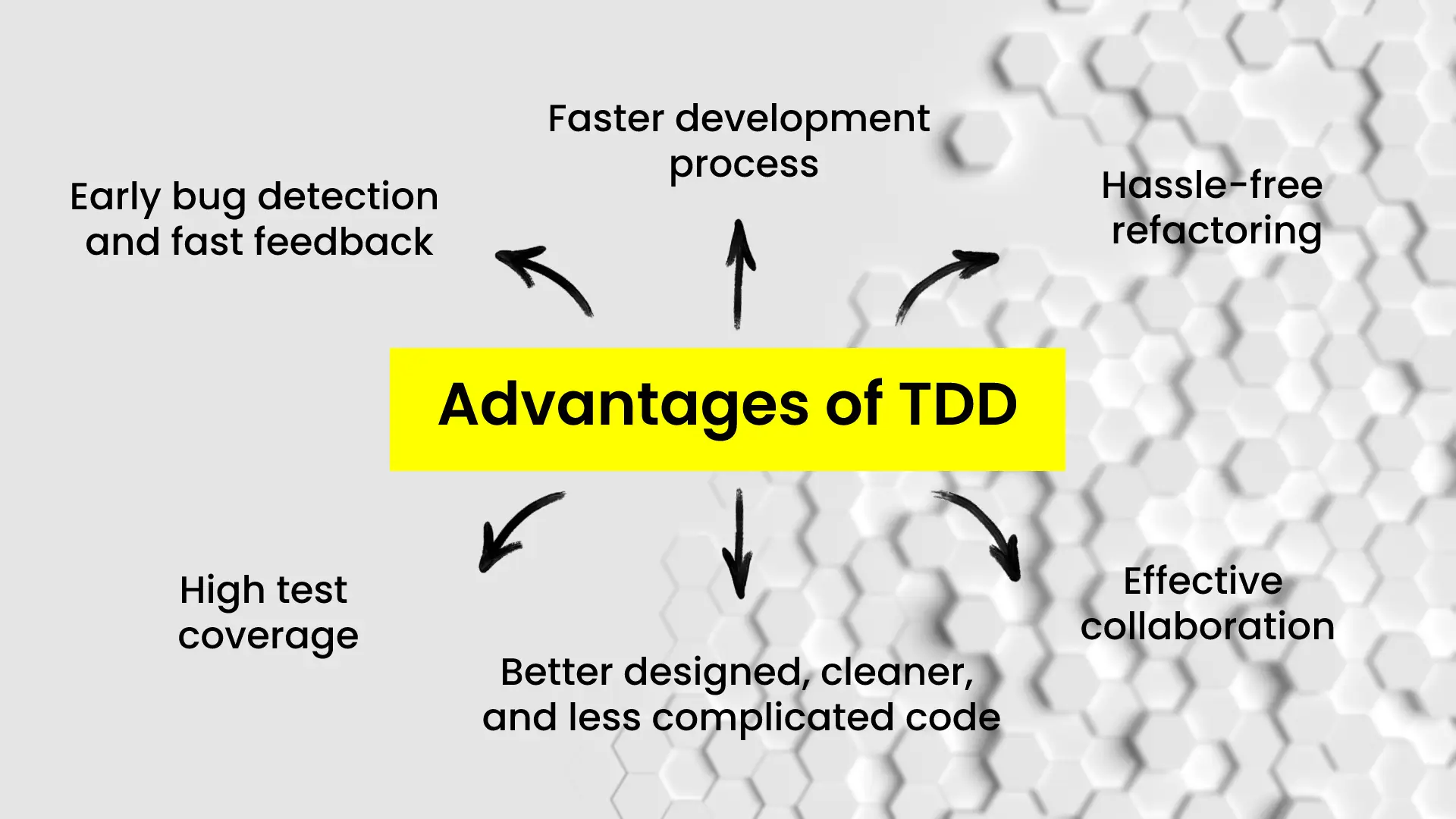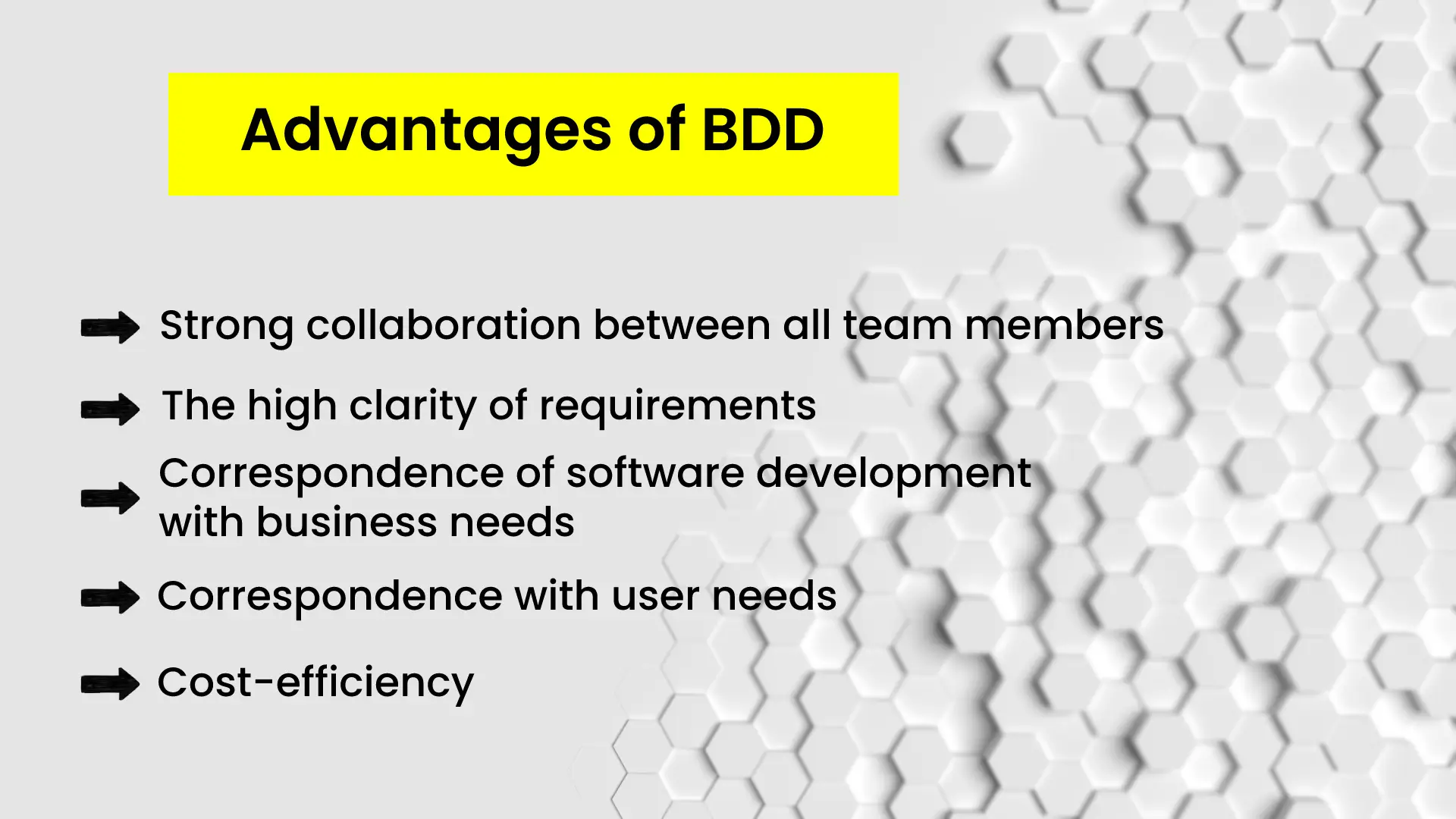8 minutes to read
TDD, BDD, and ATDD: The Key Differences and Similarities


Anastasiia Sokolinska
Chief Operating Officer
The popularity of Agile philosophy is gaining traction day by day. According to it, the process of software development is iterative and incremental. Consequently, with the advent of the Agile methodologies, the role of testing has been changed. Instead of being conducted after the completion of the development stage, it is executed now simultaneously with it or even drives it. TDD, BDD, and ATDD are among the most widely spread Agile methodologies. In this article, we are going to throw light on their main differences and similarities.
What is Test-Driven Development (TDD)?
TDD is a development methodology in accordance with which developers are guided by unit tests written before the start of software development. Unit tests are automated tests written by developers to check a minimal testable code unit or component. Consequently, it can be said that TDD suggests checking whether the code has been written correctly.
To make it clear, let's consider steps of the test-driven development process:
The mentioned steps are repeated whenever there is a need to implement a new feature or in case of some changes in project requirements. Simply put, a development team goes through this sequence of the steps for every requirement and every piece of software code to be written.
Advantages of TDD:

The main advantages of Test Driven Development are the following:
Early bug detection and fast feedback
With TDD, developers can control their coding and detect bugs as soon as work on a piece of code has been completed. Besides, over time a considerable suite of automated unit tests is built, and it can be leveraged by other developers at any time to ensure that modifications of the source code have not affected previously developed app functionality.
Faster development process
As long as using TDD, developers do not jump into the product development process at once but firstly work on writing unit tests, they have an opportunity to carefully study project requirements and in advance figure out the best way to implement certain features. Consequently, time and effort spent on unit test development justify themselves later as developers get to product development clearly understanding what they should do. This approach immensely accelerates the whole process.
Better designed, cleaner, and less complicated code
In the course of unit test writing, developers get an idea of how the software code should be written and how different software modules should interact with each other. It leads to better decisions on design and to more maintainable code. Besides, TDD suggests a minimum scope of coding just suitable to successfully pass the unit tests.
Hassle-free refactoring
Code refactoring is always associated with breaks in the code and further time-incentive fixing. Nevertheless, having a suite of automated unit tests, you can identify and tackle these breaks while the trail is still hot.
Effective collaboration
As long as unit tests can serve as specifications, in case that any member of a development team is absent other developers can easily hold the fort and work on his/her code. Moreover, this methodology also contributes to knowledge sharing and makes the whole team more efficient.
High test coverage
TDD facilitates higher test coverage as it concentrates on writing tests for each particular app functionality right from the early beginning.
What is Behavioral-Driven Development (BDD)?
Behavioral-Driven Development has derived from Test-Driven Development, but it has gone far ahead by dealing with functional tests that check the expected behavior of an application under test. In general, BDD is executed through the same six steps that we mentioned speaking about TDD. But certainly, there are also some deviations. First of all, functional tests are designed instead of unit tests. So, while TDD suggests code checking, BDD focuses on app functionality checking. Secondly, compared to TDD, BDD suggests an involvement of different stakeholders apart from developers. All together developers, businesses analysts, project managers, and customers work on user stories to determine the way criteria of each user story can be met. Then they create test cases with plain English language or a domain-specific language, also known as Gherkin. This language has an extremely simple Given-When-Then syntax:
Given - a context
When - an action to be taken
Then - an expected result.
Then, using special tools like Cucumber, it is possible to turn created test cases into automated tests. By the way, apart from Gherkin, Cucumber also supports usual programming languages.
Advantages of BDD:

Strong collaboration between all team members
Behavior-driven development encourages strong collaboration between all parties involved in the software development process. Therefore, everyone is engaged in working on behavior scenarios which helps to find constructive decisions and ensures that all team members are on the same page.
The high clarity of requirements
Since everyone works on behavior scenarios, everyone, including developers, clearly understands requirements and therefore the final result that should be received at the end.
Correspondence of software development with business needs
As a matter of fact, BDD pays great attention to business goals and needs. Close collaboration with a management team and a customer lets developers set the right priorities, clearly understand the way the customer thinks, and therefore provide the most suitable result at the end of the day.
Correspondence with user needs
Any business can gain success whenever both business goals and users' needs are met. Since BDD focuses on app behavior from the end-users' perspective, it definitely makes a contribution to the development of the right product.
Cost-efficiency
Providing the high quality of a source code from the very beginning, you can significantly cut down expenses related to debugging and code maintenance.
What is Acceptance Test-Driven Development (ATDD)?
Acceptance Test-Driven Development bears a strong resemblance to Behaviour-Driven Development, therefore, quite often they are used interchangeably. Still, these are two different development methodologies.
So, while in BDD the priority is put on software behavior and functionality, ATDD mostly focuses on meeting users' needs and business goals. In other words, BDD is more about verification whereas ATDD is about validation.
As well as in the two previous cases, a team goes through the six steps — requirement analysis, test writing, test running, code writing, code testing, code refactoring. Just like BDD, ATDD suggests active participation of diverse stakeholders in the process of acceptance criteria identification and acceptance test design. The test cases are also written in plain language and then get automated. The most widely-used test automation framework for ATDD is Robot Framework. It is also worth mentioning one more time that in all three methodologies tests are created prior to product development. As for the advantages of this methodology, they are mainly the same as those of TDD and BDD, including reduced time to market, early bug detection, high product quality, etc.
The connection between TDD, BDD, ATDD
As you may guess, all considered in the article development methodologies are test-driven. Their purpose is to make a software development process as flexible and quick as possible whereas not having to compromise on the quality of a final product. Therefore, testing lies at the core of these development methodologies. Whenever TDD, BDD, or ATDD is used, corresponding tests are designed in the first turn in order to serve as a guide for further product development. The key difference between the considered methodologies is the testing level that they utilize. Unit tests refer to the lowest testing level while functional tests and acceptance tests, in particular, are tests of a higher level.
Still, you can feel free to combine all three approaches in order to take advantage of each one and make your software development process even more efficient.
Conclusion
There are a great variety of software development methodologies. This article is dedicated to test-driven development, behavior-driven development, and acceptance test-driven development. They have many common features, the most important of which is testing lying in the heart of the development process. Even though there is always a great temptation to get to software development at a go, the experience has shown that it is always better to dedicate some time and effort to writing tests at first. This provides an intimate understanding of the way software should work and gives insights into more efficient coding. Besides, being guided by tests, developers considerably mitigate the risk of bug appearance. When it comes to the main differences, these are the level of stakeholder engagement and the used types of tests, i.e. unit tests. functional tests, or acceptance tests. It can be said that TDD focuses on code checking, BDD — on functionality checking, and ATDD — on the app compliance to users' requirements. All in all, each methodology aims at making development speedy and efficient along with providing high quality. To reap all possible benefits, a team can use a combination of TDD, BDD, and ATDD.
